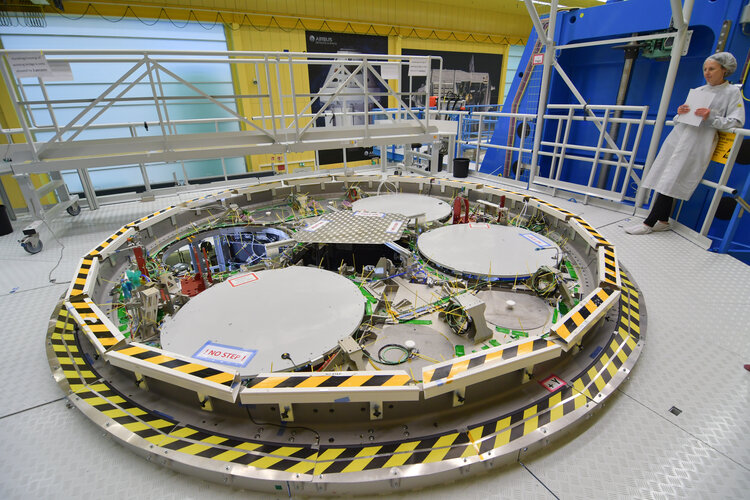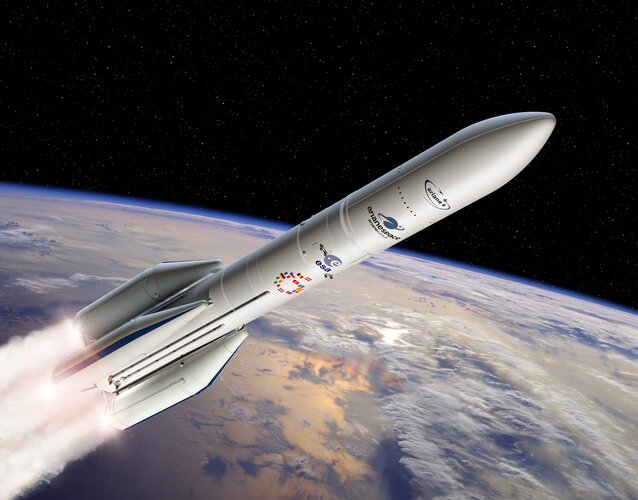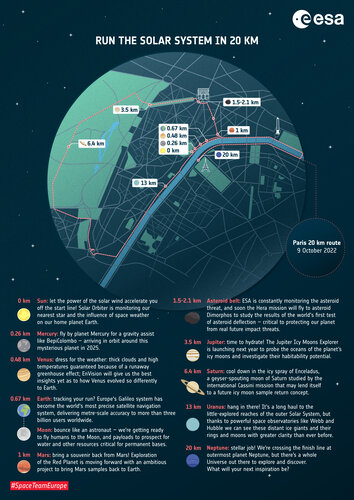
Copernical Team
US flies Russian cosmonaut to ISS as Ukraine conflict rages
 A SpaceX capsule carrying a Russian crew member docked Thursday with the International Space Station on a NASA mission that carries significant symbolism amid the war in Ukraine.
The Crew Dragon spaceship "Endurance" blasted off Wednesday from Florida and rendezvoused with the orbiting research outpost some 30 hours later, docking at 5:01 pm Eastern Time (2301 GMT).
"Crew-5 is happy to
A SpaceX capsule carrying a Russian crew member docked Thursday with the International Space Station on a NASA mission that carries significant symbolism amid the war in Ukraine.
The Crew Dragon spaceship "Endurance" blasted off Wednesday from Florida and rendezvoused with the orbiting research outpost some 30 hours later, docking at 5:01 pm Eastern Time (2301 GMT).
"Crew-5 is happy to Successful TEXUS 57 Launch - the weightless world above the Arctic Circle
 The TEXUS 57 sounding rocket was successfully launched on the first launch attempt on 1 October at 08:26 local time (06:26 UTC) from the Esrange Space Centre in Sweden to enable microgravity experiments in space. What is behind this long-lasting programme and what is its contribution to scientific research?
TEXUS (Technological Experiments in Zero Gravity) is the world's most successful an
The TEXUS 57 sounding rocket was successfully launched on the first launch attempt on 1 October at 08:26 local time (06:26 UTC) from the Esrange Space Centre in Sweden to enable microgravity experiments in space. What is behind this long-lasting programme and what is its contribution to scientific research?
TEXUS (Technological Experiments in Zero Gravity) is the world's most successful an Earth from Space: Bouches-du-Rhône

The port town of Fos-Sur-Mer, in the southern part of Bouches-du-Rhône, France, is featured in this image captured by Copernicus Sentinel-2. It is from here where the first Meteosat Third Generation Imager satellite set sail last week on its journey to Europe’s Spaceport in French Guiana.
SpaceX delivers Russian, Native American women to station

A Russian cosmonaut who caught a U.S. lift to the International Space Station arrived at her new home Thursday for a five-month stay, accompanied by a Japanese astronaut and two from NASA, including the first Native American woman in space.
The SpaceX capsule pulled up to the station a day after launching into orbit.
Australia seeks to grow plants on moon by 2025

Australian scientists are trying to grow plants on the moon by 2025 in a new mission unveiled Friday that they said could help pave the way for a future colony.
Plant biologist Brett Williams, from the Queensland University of Technology, said seeds would be carried by the Beresheet 2 spacecraft—a private Israeli moon mission.
They would be watered inside the sealed chamber after landing and monitored for signs of germination and growth.
Plants will be chosen based on how well they cope in extreme conditions, and how quickly they germinate, he said.
One likely choice is an Australian "resurrection grass" that can survive without water in a dormant state.
"The project is an early step towards growing plants for food, medicine and oxygen production, which are all crucial to establishing human life on the moon," the researchers said in a statement.
Caitlin Byrt, an Associate Professor from the Australian National University in Canberra, said the research was also relevant to food security fears driven by climate change.
"If you can create a system for growing plants on the moon, then you can create a system for growing food in some of the most challenging environments on Earth," Byrt said in a statement.
Cables, tie-wraps and no step!
 Image:
Cables, tie-wraps and no step!
Image:
Cables, tie-wraps and no step! NASA and SpaceX launch 4 more crew to the space station

The SpaceX taxi service from the Space Coast took flight again Wednesday with NASA's Crew-5 mission to the International Space Station.
The four-person crew from NASA, Japan and Russia hitched a ride in the Crew Dragon Endurance spacecraft atop a Falcon 9 rocket that lifted off from KSC's Launch Pad 39-A just after noon.
"That was a smooth ride," said Crew-5 commander and NASA astronaut Nicole Mann. "You've got three rookies that are pretty happy to be floating in space right now and one veteran astronaut who's pretty happy to be back as well."
Once again, SpaceX was able to recover its first-stage booster on recovery ship Just Read the Instructions in the Atlantic while the spacecraft made it to orbit.
Mann is joined by fellow NASA astronaut and pilot Josh Cassada and Roscosmos cosmonaut Anna Kikina—all three flying for the first time—plus Japan Aerospace Exploration Agency (JAXA) astronaut Koichi Wakata, who is making his fifth trip to space having flown on several space shuttle missions and one Russian Soyuz spacecraft.
With roughly a 29-hour ride before arriving to the ISS, the crew could be seen clapping hands and throwing fist pumps as a plush Albert Einstein doll floated about the cabin.
Team develops new tools to help search for life in deep space

Are we alone in the universe? An answer to that age-old question has seemed tantalizingly within reach since the discovery of ice-encrusted moons in our solar system with potentially habitable subsurface oceans. But looking for evidence of life in a frigid sea hundreds of millions of miles away poses tremendous challenges.
Ariane 6 takes next step to first flight with upper stage hot fire tests

ESA’s flagship Ariane 6 launch vehicle programme has taken a dramatic step towards first flight with the start of a series of hot fire tests of the rocket’s upper stage and its all-new Vinci engine.
Run the Solar System in 20 km
 Image:
Run the Solar System in 20 km
Image:
Run the Solar System in 20 km 





























